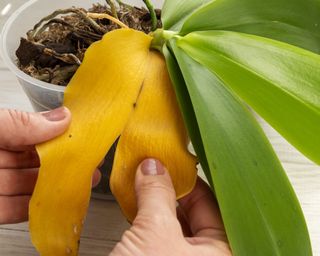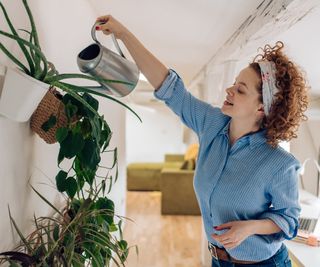Not every greenhouse needs climate control. You can, in fact, use unheated greenhouses to great effect. While you may be less able to control temperature, you’ll offer the plants and equipment within the house a lot more than you could if they were out in the elements.
Knowing what you can (and can’t) do in your greenhouse is essential to using it properly. Aside from ceasing to grow in the heat of summer or the cold of winter, you have options. And you may be surprised that more is available to you than you think!
This structure can be more than a growing space, even in the harshest conditions. You don’t have to have built-in controls to provide a little heat, either. Sometimes, the space is small enough for heat from extra lights or the right positioning.
Why Use An Unheated Greenhouse?
Small, unheated greenhouses or cold frames are convenient alternatives for space and budget-conscious gardeners.
Convenience is a huge factor, especially for gardeners working with less space and resources than someone with a full professional buildout. When you don’t have thousands of dollars or hundreds of square feet, a small cold frame is a better option. These don’t include heat controls.
However, your needs are the guiding force in what kind you use. If you want to use yours simply to store garden items in the off-season, there’s no need to go for something that is heavily controlled year-round. Additionally, a smaller space may be all you need to do your seed-starting for the year.
Temperature control without heating elements is possible. While we’ll get into more detail about that in the next section, rest assured you can add some heat with lights, a small space heater, and even harnessing thermal mass. Not everyone needs a heating element to garden well.
Adding Heat
Though you might not have those added controls to contribute warmth year-round, you can add one or two elements to heat things up. Depending on the situation, you may not even need heating or light to keep it warm.
Note that in many of these circumstances, you’ll need to provide power to the light/heat source. That may involve stringing extension cords across the yard or purchasing a small generator. Use your best judgment as to which method works best for the setting you’re working with.
Thermal Mass
 Choose a location strategically for passive heating.
Choose a location strategically for passive heating.
By placing your greenhouse in the right spot, with the right orientation, you can heat it passively with the power of UV radiation. If you’re in the northern hemisphere, a south-facing placement with little obstructions allows the heat to build up inside without electricity. North-facing placement is best for people in the southern hemisphere.
This could involve a freestanding greenhouse or a lean-to that gleans even more heat from the south-facing side of your home. When it’s cold, keep it sealed and allow the heat to build up within. Use a small thermometer to tell you when it’s time to vent and allow some cool into the interior.
Light Sources
 Use affordable options like shop lights, LED lights, or Christmas lights for added warmth.
Use affordable options like shop lights, LED lights, or Christmas lights for added warmth.
Grow lights are a great way to provide a little extra heat, but any light will do in a small enough space. While you don’t want to use a light so hot that it melts the panels, a simple shop light or red light works well.
A string of Christmas lights can provide a boost of warmth in small to medium-sized structures. T5 grow lights provide the most warmth and the best light spectrum for plants and newly sprouted seeds. All of the above are cheap and effective ways to add some heat.
Space Heaters
 Choose a safe, newer space heater with automatic shutoff features for heating.
Choose a safe, newer space heater with automatic shutoff features for heating.
If you want to provide direct heat, a small space heater is an option. Perhaps the most obvious choice, it may not be the best depending on the space heater you use. Older models may be a fire risk, and some may be hard to control. This could make the space too hot.
If you go with something newer, it’s likely the heater will have some kind of mechanism that turns it off if there is an electrical short or if the unit falls over. You can even use one that has a temperature sensor that powers it off when the area is warm enough.
Use caution if you go this route. There’s a lot to consider when it comes to space heaters and much more to consider when the heater is largely unmonitored.
5 Ways to Use an Unheated Greenhouse
All of the avenues below are adaptable to an unheated greenhouse with and without an extra heating element. You won’t need much to accomplish your garden goals either way with an enclosed space for growing or storing.
Plant Protection
 Shield plants from frost or heat by adjusting their conditions.
Shield plants from frost or heat by adjusting their conditions.
Especially if you live in a temperate climate where the winter doesn’t get too cold, using your greenhouse as a temporary way to protect sensitive plants from a snap frost is a great idea. Move your pots inside, ensure it’s properly sealed, and bring them out when the cold passes.
The same can be done for plants in high heat. Cover your smaller greenhouse with a shade cloth, open the front and back, and allow the air to vent through. This creates a shaded area with good air circulation that protects more heat-sensitive plants.
Overwintering
 Overwinter heat-loving plants in containers with occasional venting for optimal health.
Overwinter heat-loving plants in containers with occasional venting for optimal health.
In the same vein of protecting your plants, you can overwinter your warm-weather plants in a greenhouse. Peppers and tomatoes can remain alive over the winter in containers, especially if you prep them by cutting them back and watering them deeply.
The same can be said for lots of warm-weather plants. The caveat is that you will need some venting to keep the plants happy and avoid disease development. If it gets warmer on a winter day, it’s possible you could singe them if they don’t have proper airflow.
Seed Starting
 Start seeds in an unheated greenhouse using sunlight, thermal mass, or supplementary heat.
Start seeds in an unheated greenhouse using sunlight, thermal mass, or supplementary heat.
You can start your seeds in a greenhouse. If you’re working with a small cold frame cabinet, use the thermal mass of the spring sunlight to provide you with the heat you need to get those plants going. A little space heater or even a string of Christmas lights can add a heated boost if you have a larger space.
Thermal mass can provide enough heat on its own, though. To harness the power of your structure’s ability to hold heat, orient it properly. Make it so the seedlings are in an area that faces south. Of course, a grow light and a heat mat will often provide all the heat your seedlings need to thrive.
If you’re starting cold weather crops, you may not even need heat so much as humidity. If you have a small enough space, you can provide some protection from the cold with just an old sheet or frost cloth draped over the top. You don’t have to limit your space to warm-weather crops at all.
Drying, Canning, and Preserving
 Provide good ventilation for drying herbs and vegetables.
Provide good ventilation for drying herbs and vegetables.
A well-ventilated greenhouse can be a great space for drying herbs, alliums, vegetables, beans, and more. You can set up a series of baker’s racks (or something similar) to provide airflow around whatever it is you’re curing. You can build your own with hardware, cloth, and wood as well.
Use the rafters to dry herbs and cure braided garlic and onion bulbs. Hang your harvested pepper sprigs upside down in the same way to dry them for chili powder. The shelves can also hold canned or fermented items you want to use later on. There’s a lot of potential here.
You should always keep your structure dry and cool when you’re canning, curing, preserving, and drying, though. You want to ensure the humidity doesn’t build up to a point where your harvest is at risk of contracting mold, bacteria, or fungus. Fans and vents provide the flowing air that you need in this regard.
Garden Tool Storage
 Store garden tools, soil, and power tools for extended durability.
Store garden tools, soil, and power tools for extended durability.
If it gets too cold where you live to do anything outdoors in winter, you can simply use your greenhouse for your starter pots, garden tools, and soil. Keeping these in a protected area away from the elements will ensure their use lasts longer than they would sitting outside.
You can even store power tools that you employ in the garden. Leaf blowers, hedge trimmers, and chainsaws are all well protected in structures fortified enough to keep the winter precipitation away.
Final Thoughts
Your unheated greenhouse can be useful to you for many seasons if you use it properly. In super cold weather, you can add heating elements or use the power of the sun’s rays and proper orientation to keep the contents warm and protected.




